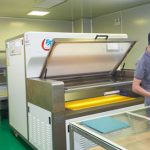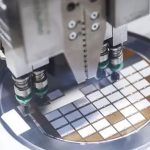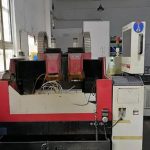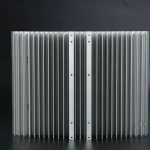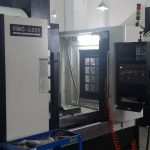Although medical 3D printed devices have unique advantages in shape control and mechanical properties, there are still many key issues that need to be resolved in terms of specific clinical applications. First of all, currently available medical 3D printing materials are very limited, far from being able to meet the current comprehensive needs of biomedical materials. Secondly, even in the dental field where medical 3D printing is the best developed, the surface properties of existing printing materials (biocompatibility, antibacterial activity, hydrophobic repellency, etc.) are still not small compared to materials prepared by traditional techniques. gap. Therefore, how to make the 3D printed implant materials not only meet the topography control and mechanical properties, but also give them excellent surface properties for clinical treatment will become a research hotspot and difficulty in the future.
Based on the above situation, combined with the research foundation of the research group in the field of intelligent nano-modification and 3D printing technology, the applicant proposes a research plan that combines nano-modification and 3D printing technology. This technology is aimed at the performance requirements of common medical machining implant materials such as artificial teeth, surgical guides, maxillofacial stents, and bone tissue supports; through the functional nano-modification of the material surface, its biocompatibility, antibacterial activity, and hydrophobicity are significantly improved , Anti-allergic and other important performance parameters. At the same time, it is possible to achieve personalized customization of the surface properties of 3D printing materials by adjusting the composition, density and arrangement parameters of the nanoparticles according to the own conditions of different patients. As a result, within a limited time and cost, a series of medical functional devices with not only accurate structure and topography, but also excellent surface performance have been developed, and the application market of the medical 3D industry has been rapidly expanded.
3D printing technology has developed rapidly in recent years. It has the advantages of preparing complex objects, product diversification, free assembly and saving materials. It is used in graphene stents, chemical synthesis, electronic sensors, metal structures, microvascular networks, and hydrothermal reaction pools. , Hydrogel nanocomposites, cell printing, bone tissue regeneration and bionic ears and many other fields. Some raw materials, such as plastics, metals, hydrogels, and ceramics, have been used to accurately print various objects with complex shapes. However, if we examine these products carefully, we will find that no matter how precise their structure is, due to the lack of required functional characteristics, only a small part of the products can be used by the public in the end. How to improve the performance of printed products has become a frontier issue in the field of 3D printing. If there are no suitable functional characteristics, the popularization and use of this revolutionary technology will be greatly restricted. Surface modification is a main idea for the industrialization of 3D printing, and a universal surface engineering method suitable for most printing methods and printing materials is in urgent need of a breakthrough.
The status quo, difficulties and ideas of 3D printing technology in the medical neighborhood
Link to this article:The status quo, difficulties and ideas of 3D printing technology in the medical neighborhood
Reprint Statement: If there are no special instructions, all articles on this site are original. Please indicate the source for reprinting:Alloy Wiki,thanks!^^



